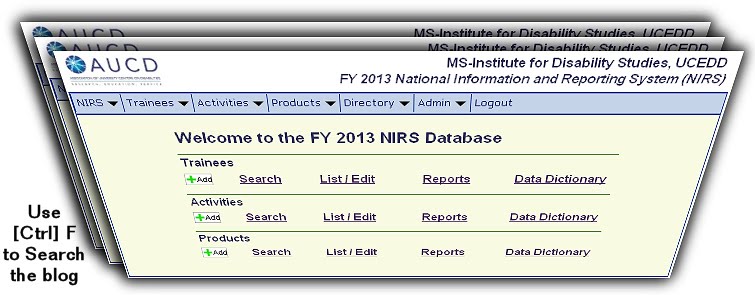Activity Title: Put project name or acronym first before describing activity (such as CORE - Display board at H'brg community center 7/3/11)
Staff Involvement: Make sure to select your name (and others involved in the activity) and click on "Link this person to the activity" button. If you do not, then your name is not in the system.
Enter Number of Participants and Duration (hours) for each activity. The entries with 0 participants and 0 hours do not make sense to me.
A change for this year - If you enter number of clients in the core functions of Direct Services or Other Direct Services, then "Not Applicable" should be selected under Number of Participants.
Technical Assistance (TA) is defined as direct problem-solving services provided by faculty/staff to assist programs or agencies in improving their services, management, policies, and/or outcomes. TA may be provided in person, by electronic media such as telephone, video, or e-mail, and by other means. The following are examples of technical assistance: program planning or development; materials development; management consultation; community/advisory group participation; coalition building; and consultation to service providers/other agencies. ALSO...report setting up project DISPLAYS...if you didn't have a sign-in sheet at your display, then estimate the number of people you talked to at your display.
(IMPORTANT NOTE: TA in NIRS is not assistance to a person with a disability. IF YOU ARE ASSISTING A PERSON WITH A DISABILITY or family member representing a person with a disability....please count that as Direct Service (if they enter your program and you start a detailed file on them...you know race and age) OR as a OTHER DIRECT SERVICES CLIENT if you assist them but do not keep detailed file on that person.)
Training - any presentations you make or your project offers. (It is TA if you help another agency set up a meeting and do not speak.)
DIRECT SERVICE: IF YOU ARE ASSISTING (providing program services for) A PERSON WITH A DISABILITY or family member representing a person with a disability....please count that as Direct Service (if they enter your program and you start a detailed file on them...you know race and age)
OTHER DIRECT SERVICES: Report when you assist a person with a disability (or family member representing) in person, on phone, via e-mail, etc. but do not keep detailed file on that person.
Core Function of Research and Evaluation:
Research may include basic or applied research, evaluation, and the analysis of public policy in areas that affect or could affect, either positively or negatively, individuals with developmental disabilities and their families. Research may entail functions such as proposal development, report writing, experimental/quasi-experimental design projects, interviews, focus groups, surveys, data entry, data analysis, and other types of functions.
Developing and Disseminating Information
Report numbers of products dissemination....Products include brochures, informational/data flyers, online modules, Web sites, public relations and other types of initiatives that were created at IDS...by an IDS staff member.


